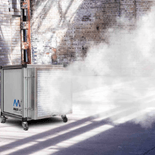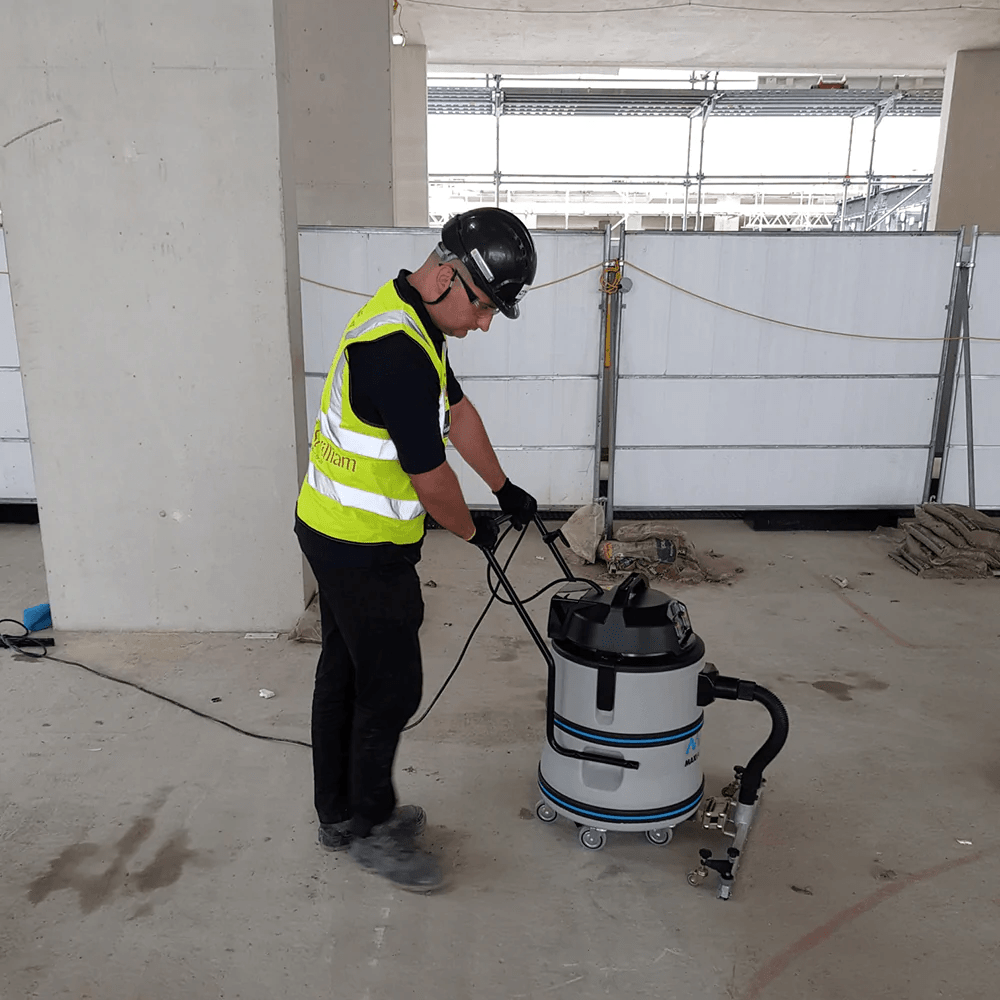Dust. It can kill
Not just today, but years down the line
Don't risk your health, protect your lungs from dust
Construction workers die every week from lung diseases caused by exposure to dust. Many more suffer from severe chronic long-term lung conditions.
Don’t make the same mistake as construction workers who have not realised the health risks of exposure to dust and have worked unprotected.
Make sure you are aware of the risks and know what to do to stay safe.
DUST IS A SILENT AND SOMETIMES INVISIBLE KILLER
Dust particles can be 100 times smaller than a grain of sand. You don’t need to see them to breathe them in – they can literally be the unseen killer. Once in your lungs, dust will start causing damage and is quite often irreversible.
For most, exposure to dust leads to long-term breathing difficulties and lung disease which greatly effects the quality of life. Unfortunately, it gives you very little warning as the damage is often not visible for many years and it can then be too late.
Make sure you are aware of the risks and work in ways that always protect your lung health.
The many types of dust that you may experience in the workplace can be categorised into two types.
Inhalable dust is the larger of the two types of dust, most of which can be filtered out naturally in your nose and throat.
Respirable dust is the more dangerous of the two.
In this case, the dust particles cannot be filtered out by your nose or throat due to their small size. Therefore, they can cause you serious health problems with prolonged exposure by penetrating the pulmonary alveolar region of the lungs.
Dust exposure in the workplace is an issue both employers and employees need to be aware of, as it can lead to many different health problems.
Dust exposure can cause and exacerbate, ranging from the mildly serious to the life-threatening.
Lung cancer – With an estimated 43% of annual deaths from lung disease at work being due to asbestos and non-asbestos-related lung cancer, exposure to dust is a serious health hazard.
Chronic obstructive pulmonary disease – 33% of current annual deaths from occupational lung disease are from Chronic Obstructive Pulmonary Diseases such as emphysema and chronic bronchitis.
Silicosis – respirable crystalline silica (RCS) causes irreversible effects of inflammation and fibrosis of the lung tissue, if exposed to over a prolonged period. Symptoms include a persistent cough and shortness of breath and can often become worse years after the initial exposure. An estimated 500 construction workers die each year from silicosis
Asthma – dust exposure radically affects how this common and long-term chronic disease is managed. Respirable dust particles are small enough to get right into your lungs, causing inflammation and swelling
of your airways, inducing your asthma symptoms
DUST - A BIGGER GLOBAL KILLER THAN SMOKING
Some frightening facts about the dangers of dust
- Dust costs the UK economy over £20 billion a year.
- More than 3,500 builders die each year from cancers related to their work.
- The HSE reported that there were around 39,000 individuals suffering breathing and lung problems in the UK and there are around 8,000 deaths per year as a result of occupational cancer.
- Health & Safety Inspectors initiative to check & investigate businesses.
- Thousands of ill-health and working days lost due to dust.
- Around 100 times as many workers die from diseases caused or made worse by their work than are killed in construction accidents
- Legal requirements in the UK – the government run Health and Safety Executive (HSE) have made dust a primary focus, giving out fines of up to £2000 where inefficient, the wrong or no dust extraction is being used.
- Minimum of a Class M dust extraction system required in commercial and industrial.
- Last year, tiny particles of sand, wood and asbestos contributed to 12,000 deaths from lung disease in the UK, according to the Health and Safety Executive.
- HSE will carry out excess of 1000 visits each year.
- HSE’s inspectors across Great Britain will be targeting construction firms to check that their health standards are up to scratch during inspection initiative, starting on Monday 4 October 2021.
- This year inspections will focus on respiratory risks and occupational lung disease, looking at the control measures businesses have in place to protect their workers’ lungs from construction dust including silica, asbestos and wood dust.
- HSE’s chief inspector of construction, Sarah Jardine, said: “Around 100 times as many workers die from diseases caused or made worse by their work than are actually killed in construction accidents.
Dust Awareness Schemes & Risk Assessments
Dust Awareness Schemes and Risk Assessments
The effects of dust in relation to soiling (local amenity) and health can be a concern in the planning process and visible dust emissions and deposition can lead to complaints.
Dust can be generated in a number of processes including during demolition and construction activities, mineral activities such as quarrying, industrial processes such as cement batching, and waste management.
We provide a comprehensive Dust Awareness Schemes and Risk Assessment complete with solutions.
- Dust Monitoring
- Preparation of Dust Management Schemes and Plans
- Input into Construction Environmental Management Plans (CEMPs) to mitigate the impact of sites in relation to dust emissions
- Providing evidence to planning appeals
Why you should be concerned about dust Management
Comply with the law
Identify risks before they become problems with help from our team of experts.
Keep your people safe
Benefit from the efficiency of a happy, healthy workforce with reduced absence and downtime.
Get inspection-ready
Reduce the risk of on-the-spot fines from the HSE (Health & Safety Executive).
Prepare insurance claims
Make sure you have the necessary risk assessments in place for any insurance claim.
Improve tender processes
Complete your risk assessments in preparation for health & safety accreditation schemes like CHAS










